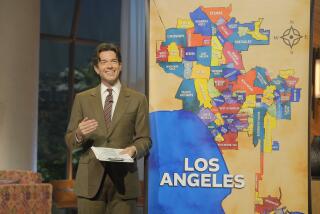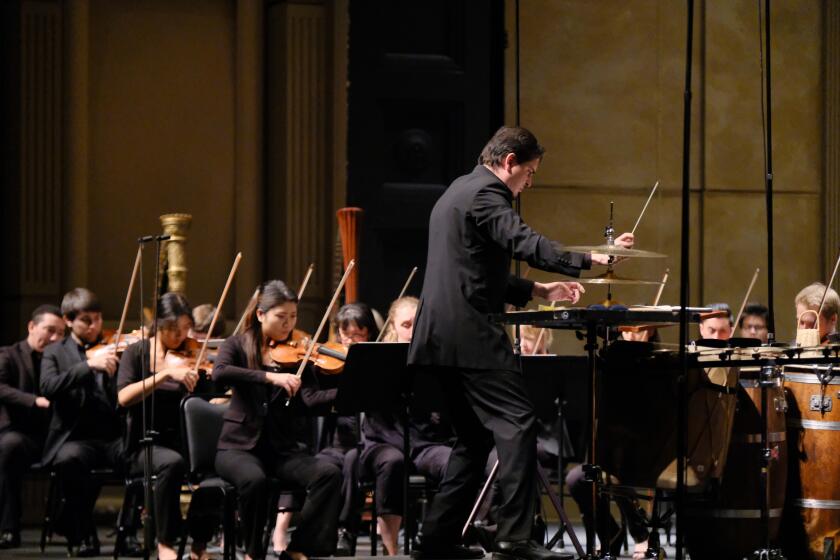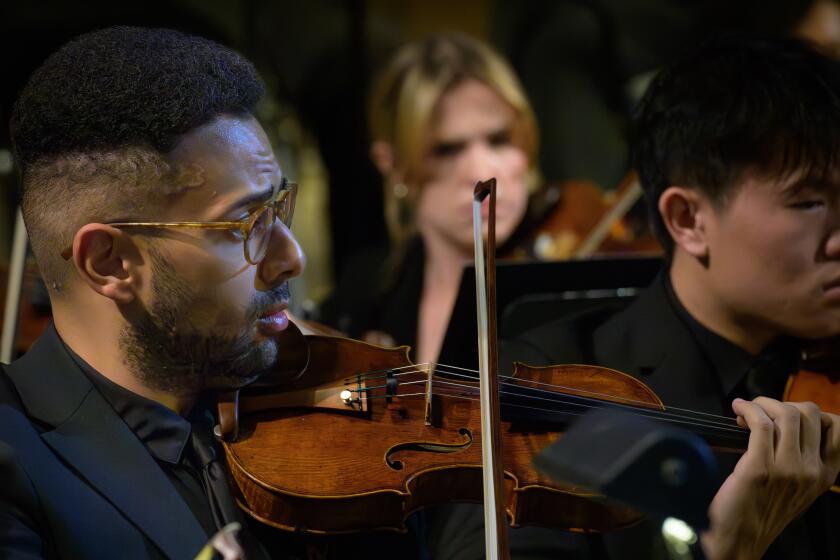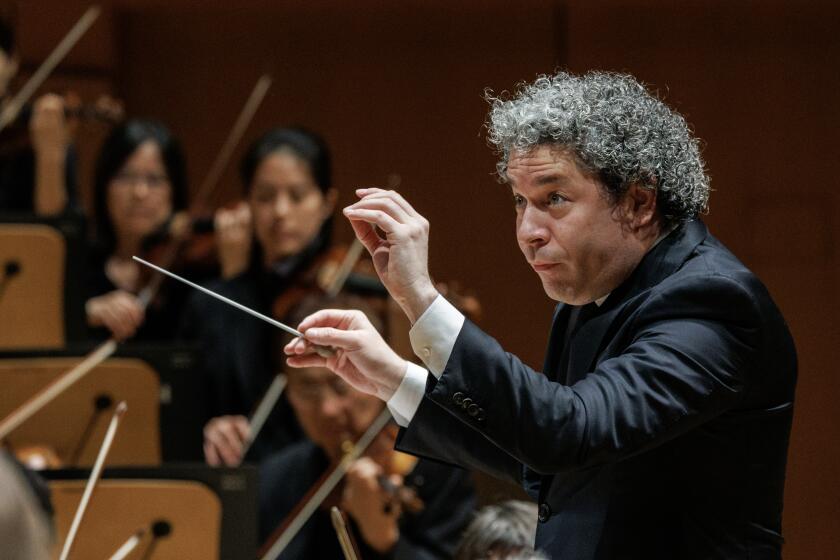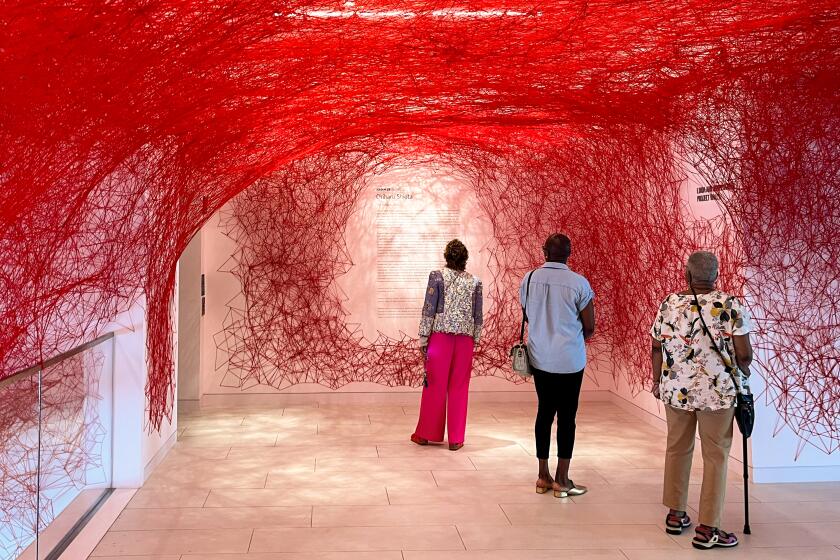Villazon, as always, sings his heart out
Rolando Villazon has driven Los Angeles Opera audiences to near frenzy as a dashing Romeo, a passionate Alfredo and most recently a fate-driven Des Gieux. Friday, in the new Renee and Henry Segerstrom Concert Hall in Costa Mesa, the young Mexican tenor brought the same winning qualities to his first Southern California recital.
Accompanied by San Francisco Opera pianist Bryndon Hassman, Villazon sang Schumann’s song cycle “Dichterliebe” (Poet’s Love), a Bononcini aria, Handel’s “Ombra mai fu,” two French art songs, a Tosti ditty, four selections from Obradors’ “Canciones Clasicas Espanolas” and no fewer than five encores, including the premiere of Daniel Catan’s “Comprendo,” written for him. The composer was in the first balcony.
For the record:
12:00 a.m. Oct. 21, 2006 For The Record
Los Angeles Times Saturday October 21, 2006 Home Edition Main News Part A Page 2 National Desk 1 inches; 49 words Type of Material: Correction
Rolando Villazon: A review in the Oct. 16 Calendar section of Rolando Villazon’s recital Oct. 13 at the Renee and Henry Segerstrom Concert Hall in Costa Mesa said the tenor dedicated an encore to his daughter. Villazon dedicated the encore to his son Dario, who was in the balcony.
Villazon sang everything with the fervor and intensity that make him a phenomenon. He was unafraid to use facial gestures and open arms to help dramatize a song and bring the audience into his orbit, a rare quality indeed. Between songs, he showed a modest, sunny and spontaneous charm, bending down to tie a shoelace or reaching out to dedicate an encore to his young daughter in the balcony.
His passionate commitment and refusal to hold anything back may be a bit reckless, costing him and worrying his fans, however. Although he is only in his early 30s, his honeyed, lyric voice sounded pebbly under pressure, especially in the lower range. While he has a strong top, it didn’t always blossom and ring freely. Frankly, the encores may have shown those high notes at their best.
Admittedly, the acoustics of the new hall, which opened about a month ago, are still in their early stages of tuning and take some getting used to. From a seat on the main floor, the sound assumed a pressured, resonant verticality suggesting the weighty space within a church. It may also have bleached out some colors. Hassman’s accompaniment, for instance, was pale and interpretively bland, which is not what others have reported of his playing.
Villazon sang “Dichterliebe,” surprisingly, using the score, although he often turned away from it to invest each song with character. Everything else, except the new Catan song, was off book. Bononcini’s “Per la Gloria d’adorarvi” from “Griselda” and Handel’s most famous aria from “Serse” showed him as much at home in baroque repertory -- a discovery for most of us -- as did the Obradors songs and French repertory in which he excelled (Massenet’s “Ouvre tes yeux bleus” and Faure’s “Apres un reve”).
His four other encores were Grever’s “Te quiero dijiste,” Nacho’s “Intima,” Tosti’s “L’alba separa dalla luce l’ombra” and a simply dazzlingly fast and animated account of Rossini’s “La Danza.” Please, Rolando, take care of yourself.
More to Read
The biggest entertainment stories
Get our big stories about Hollywood, film, television, music, arts, culture and more right in your inbox as soon as they publish.
You may occasionally receive promotional content from the Los Angeles Times.
